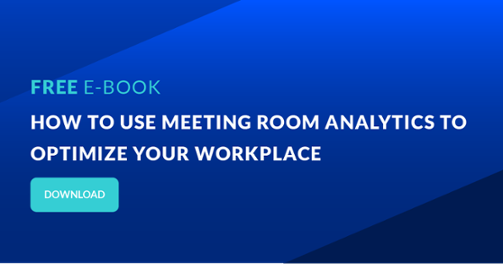Work and the nature of where and how it is done has changed a lot in recent decades. Where once an employee toiled in a factory or managed files in a cubicle; now the rise of portable computers, high-speed internet, and creative knowledge work has allowed many jobs to be done in any number of different locations.
Accordingly, employers are beginning to offer flexible accommodations while trying to balance productivity with happiness and personal fulfillment. It is a fine line, which is why here we are going to explore the pros and cons of increasingly popular flexible, collaborative workspaces as well as why traditional, dedicated workspaces still have their place—and how to strike the best balance for your business.
Flexible or dedicated workspaces?
We are all pretty familiar with what a dedicated workspace is. Traditionally, it is an office space that a business owns or rents long-term where workers have their own designated areas to which they are expected to show up and do their jobs most days.
On the other hand, flexible workspaces are typically owned by a co-working company from which a business rents offices or open space on a short-term basis. Where the same people might occupy the same desks for years in traditional, dedicated office spaces; flexible workspaces often see workers and entire businesses moving around.
Generally, there are four types of spaces at flexible co-working offices:
- Shared co-working space where members grab available, communal space—these first-come, first-served spaces are often called “hot desks”
- Desks which can be rented by individual workers or their employers
- Private offices that typically house a handful of employees
- Meeting spaces that can be booked by the hour
In a June 2019 “All Things Considered” segment for NPR, host Audie Cornish suggested that 30 percent of Americans will work from flexible spaces in the next decade.
But it might take a little longer than that to get there. Commercial real estate giant CBRE notes that 70 percent of flexible office space is concentrated in the nation’s 10 largest markets and that flexible space still only accounts for 2 percent of total office inventory.
Modern employees value flexible workspaces
One thing is for sure: In certain respects, it has gotten much tougher for businesses. Where companies of 30 or 40 years past could get away with tacky wooden furniture and building designs that looked straight out of the Soviet Union, offices in 2019 have to impress or lose potential workers. In a recent study, 61 percent of workers said they valued an aesthetically-pleasing workspace.
While it is easier to manage a certain aesthetic in a permanent office space, businesses can also seek it out from co-working companies. In the same study, 53 percent of workers said they valued having the ability to work in different locations, with 19 percent of workers saying they are happier in flexible workspaces and 34 percent saying they feel more creative.
It is easy to deduce why this may be. Flexible workspaces let employees work when and where they are comfortable, giving them autonomy and trusting them to complete tasks. Harvard Business Review was already observing the trend toward flexibility at a company called Telenor back in 2014: “Telenor’s open, public, and flexible space values exploration much more than engagement—it begs employees to meet in the open, where they may bump into unexpected people, and allows them to claim spaces and shape them for brainstorming sessions.”
The cost of ignoring flexibility
Somehow, though, many companies even in 2019 still do not get it. They force their workers to adhere to strict Industrial Revolution-esque schedules. Forget telecommuting or remote working—these places have no interest in allowing even the most modest of innovations. It’s eight hours a day at the same time, at the same place.
There is undoubtedly a cost, both for inflexible companies and the good employees they alienate. For example, a good employee that puts in extra hours of work from home might end up getting rejected for promotions because he seems to leave work to take care of the children, which was interpreted as a lack of commitment. Similar situations are common misunderstandings that happen in inflexible workplaces that have not adopted the more modern, flexible way of working.
Some degree of flexibility should be embraced by every workplace to avoid the above situation—but are full-on collaborative offices truly the only way forward? Let’s find out.
Pros and Cons of Flexible Workspaces
The benefits of flexible workspaces have become increasingly well-known in recent years, with co-working an increasingly popular trend even among Fortune 500 companies. That said, there are a few downsides, as well. Here are both the pros and cons of going all-in on flexible workspaces.
The pros of flexible workspace
Unconventional, flexible workspaces signal that a company is willing to adapt to the times and encourages employees to exchange of knowledge—all while remaining conscious of space utilization.
An Environment That Encourages the Exchange of Knowledge
When workers are segmented off into cubicles and individual offices, chances for collaboration and the kind of one-off, creative conversations that can happen in a good office diminish. However, these random exchanges of knowledge happen often in flexible co-working spaces, where members expect it. Of course, traditional office-based companies can adapt this spirit, too—but they have to work to foster it.
Take Advantage of Both Design and Freedom
As we explored above, businesses of today must provide seemingly contradictory things: A carefully-planned, aesthetically-pleasing office that also caters to workers who want to move about it in unplanned ways. If it is too difficult to make over an existing office to fit these requirements, one of the greatest things about flexible co-working spaces is that it provides an immediate solution.
Space Utilization
Whether because of travel, vacation time, or sick leave; it is almost inevitable that some space in a dedicated office will go underutilized from time to time. By allowing businesses and employees to select a rental agreement—often monthly—that fits their schedule, flexible workspaces can eliminate costly underutilization. nUnfortunately, this very commitment to flexibility can lead to some big downsides that are unique to co-working spaces.
The cons of flexible workspace
Flexible spaces can be distracting, hard to manage effectively, and, most worryingly, here one day and gone the next.
Having All Your Eggs in One Precarious Basket
One particularly popular co-working space provider, WeWork, spent $2.5 billion on leases in 2018—occupying the most private sector real estate space in London, New York, and Washington D.C. Great sign for flexible co-working spaces, right? - Not necessarily. In 2019, WeWork filed to withdraw its initial offering (IPO) when “investor skepticism” and financially losses forced it to consider a valuation of $10 billion following a $47 billion valuation in January of the same year. Whether it is WeWork or another provider, companies that choose to base their businesses in co-working spaces long-term must accept that they’re aligning their success with that of the co-working space—for better or for worse.
Distractions Galore
Because of that “knowledge exchange” culture that we mentioned earlier, co-working spaces can actually make it harder to get deep work done between excessive noise and unplanned (read: unwelcome) desk visits.
Difficulty of Administration
One of the biggest business challenges of a flexible workspace may be office administration. When workers are distributed and coming in and out all all times of the day, it can be hard to get everyone together for important trainings or to fill out new paperwork. Sometimes, it’s just easier having all workers under one roof.
Lack of Routine and Personal Space
The lack of personal space and routine that comes with flexible co-working spaces can actually be uncomfortable for employees. Imagining starting each day hunting for a desk because traffic on your commute made you 10 minutes late. And forget about leaving any personal touches—or even your laptop charger—at your desk overnight if you aren’t planning at clocking in at 5 a.m. to make sure someone else doesn’t snag that nice spot by the window. Does increased flexibility make up for the time and stress employees are exerting every day just to find somewhere they can work comfortably?
The Pros and Cons of Traditional Offices and Dedicated Workspaces
With over 95 percent of office space still traditional in America, they have to be doing a few things right. Here are the major upsides—and downsides—of the alternatives to flexible co-working spaces.
Cons of Dedicated Office Space
When some people think of the traditional office, they think of outlandish real estate rates and ugly, old furniture. Unfortunately, they’re too often right about these main downsides of dedicated office space.
Overhead Costs
When a company rents a traditional office space, it makes a commitment. Often, that commitment means a ten-year lease at thousands of dollars each month. It can also mean paying for regular cleaning, maintenance, lawn care, and managerial staff to keep the office looking nice.
You May Need to Remodel to Stay Modern
If you’re working with soulless cubicles, dingy break rooms, outdated offices, over-bright and over-sized meeting rooms—it’s no wonder employees would rather spend time basically anywhere else. Modern workspaces should have a mix of open and private work areas, intimate meeting spaces, and sound-proof booths for phone calls or extra-focused work.
Dedicated Office Space Provides Benefits
Traditional offices aren’t all expensive rent and remodeling fees—there are quite a few benefits that come along with dedicated office space.
Dedicated Office Space Feeds Stability and Productivity
Research shows that employees don’t actually switch between different work settings that often. And while employees who like to switch between workspaces are more satisfied when they have the option to do so, those who don’t desire this kind of flexibility are decidedly unhappy when it’s forced upon them.
Dedicated office space means that workers will never have to fight over shared coworking space. It means they’ll never have to worry if they’ll be able to find privacy or settle down and concentrate on any given day. It means that when they come in each morning, their desk and their photos of their kids will be as they left it the previous workday. And the stability that instills is invaluable.
A traditional offices can give employees productivity-enhancing structure that’s hard to find in the modern world. Sure, their work schedules and personal lives may be hectic; but a dependable, dedicated office space is often just what employees needs to shut the world off and get to work.
Collaborate on Your Terms in a Conventional Office
Getting workers around one another consistently generates stronger team culture, improved communication and productivity, and through-the-roof creativity. It is hard to form those kinds of bonds and reap those kinds of benefits when a team is never in the same place at the same time.
Dedicated Office Spaces can be Tailored to Impress Clients
Another benefit of keeping a traditional office space, as one office provider noted, is a chance to dazzle anyone who visits:
"A private office space allows you to invite guests into your own office, instead of ushering visitors past other coworkers to a rented conference room. Having an office space to call your own is impressive."
In addition, a customer who visits a business at co-working space might not be impressed by the flexibility and instead assume the company isn’t large enough to meet its needs. Businesses want to convey power and that they have the wherewithal to stand the test of time. Having a fixed, well-designed office is a great way to express to anyone whom you do business with that you aren’t going anywhere.
Which Workspace is Right for You?
When creating or updating your company’s workspace, the first thing to know is that there isn’t a right or wrong way to do it—and, change is generally possible. The key to determining whether a fixed or flexible workspace is best for you lies in what’s right for your company today and what kind of culture you wish to cultivate for workers and clients. From there, it’s a matter of weighing the costs against the benefits.
Companies can make use of both co-working spaces and traditional offices in a variety of ways—such as having a fixed home base for the majority of employees and flexible arrangements for remote workers. In addition, businesses that already own office space can make modern updates that welcome flexibility while cutting expenses with office management technology that mitigates overhead. Whatever balance you strike with your business, remember that “flexible” and “dedicated” don’t have to be mutually exclusive when it comes to office space.




